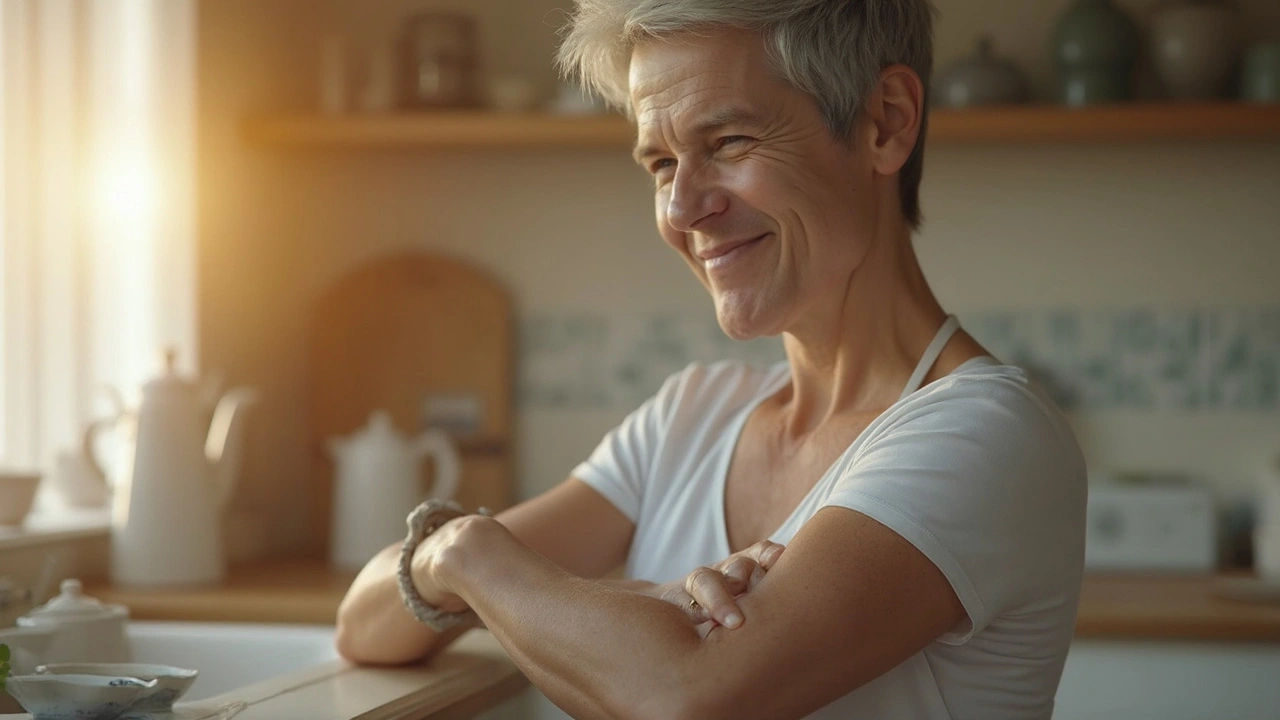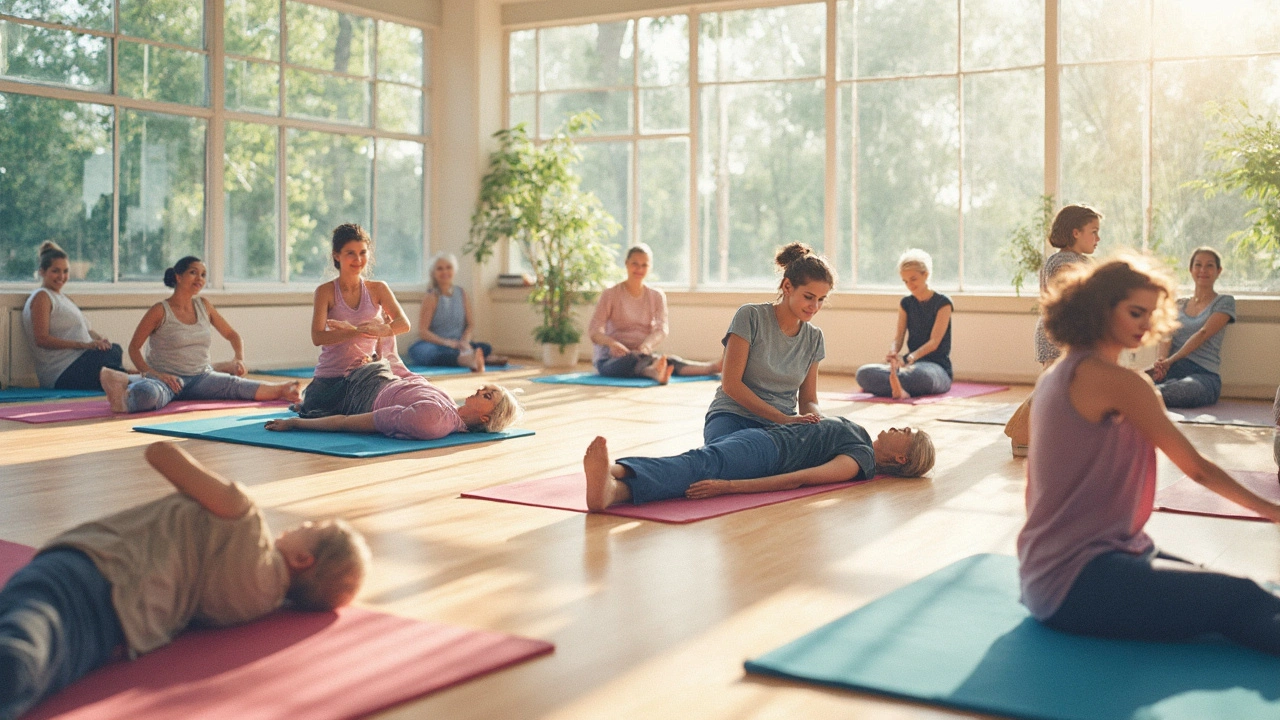Ever noticed how some people move with such ease, while others struggle with aches and tension doing the simplest things? It’s not just luck or age—often it comes down to how we’ve learned to use our bodies. Feldenkrais training is like a secret manual for your body and mind, helping you improve the way you move—and even the way you think about moving. Forget fancy gear or hardcore workouts; this method is all about learning smarter, not harder.
Feldenkrais is for anyone who wants to move better, feel more comfortable in their own skin, and ditch the sense of being “stuck” with old habits or nagging pains. Whether you’re recovering from an injury, dealing with chronic pain, or just feeling a little stiff, Feldenkrais gives you the space to safely try new ways of moving. And the coolest part? You don’t need to break a sweat to see changes. The tiniest adjustments can make a huge difference over time.
- What is Feldenkrais Training?
- How Feldenkrais Works
- Real Benefits You Can Expect
- Getting Started: Tips for Newcomers
What is Feldenkrais Training?
Feldenkrais training is a unique way to learn better movement by paying attention to how your body works. The method was created by Moshe Feldenkrais, a physicist and judo expert, back in the 1940s after he dealt with his own knee injury. Instead of just pushing through pain or working harder, he found that gentle awareness and small experiments with movement could lead to huge improvements. This method is all about helping your brain and body team up so you move in easier, less stressful ways.
At its core, Feldenkrais offers two main options: Awareness Through Movement (ATM) group lessons and Functional Integration (FI) hands-on sessions. In ATM classes, a teacher guides you through gentle movement sequences—usually lying or sitting—while you focus on what you feel. No one pushes you past your limits. In FI sessions, a specially trained practitioner works with you one-on-one, using their hands to help your body find new options for movement without pain or strain.
The method stands out because it’s based on how the nervous system learns. Instead of drilling exercises, you explore and discover. This means everyone—kids, adults, athletes, musicians, seniors—can benefit. Body learning is a big deal here, and your body picks up on the smallest changes, often way faster than you’d expect. Science backs this up: research out of universities in Germany and the U.S. found that Feldenkrais can help with balance, flexibility, and even reduce chronic pain.
- No special gear or fitness level needed
- Focus is always on comfort and curiosity, not competition
- Movements are usually slow and mindful, so you really notice patterns and shifts
- Each lesson is different, targeting real-life movements like walking, sitting, or reaching
The best part? You can use what you learn in Feldenkrais training right away. Folks often notice they walk taller, breathe easier, or feel less stiff—even after just a handful of classes. It’s not just theory; it’s practical, and the results can stick with you for life if you keep exploring.
How Feldenkrais Works
The magic of feldenkrais training is in how gentle and practical it is. Instead of stretching until you wince or pushing for more reps, you focus on simple movements, often while lying down. The idea is to pay close attention to how you move, feel the differences, and then let your brain build better patterns. It’s all about exploring, not forcing.
A typical Feldenkrais lesson follows one of two main formats:
- Awareness Through Movement (ATM): These are group classes where a teacher guides you with verbal instructions. You might do slow head turns, roll your hips, or move your arms, all while noticing what feels easy and what feels awkward. No one demonstrates; you rely on your own noticing. The focus is less on “doing it right” and more on how it feels.
- Functional Integration (FI): This is hands-on, one-on-one work. The teacher gently moves you, helping you sense new possibilities. It’s totally customized for your needs—maybe helping you walk with less limping, or release neck pain that’s bugged you for years.
What’s different from your usual fitness class? With Feldenkrais training, you engage your mind as much as your muscles. Research from the last few years, especially a 2021 clinical study published in the journal “Pain Medicine,” shows that Feldenkrais lessons can significantly reduce pain and improve mobility in people with chronic low back issues. That’s not just wishful thinking—it’s measured change.
Here’s how the process really works in your brain and body:
- You move slowly, paying attention to comfort, not striving for a goal.
- Your nervous system gets a safe, low-stress environment to test new movement options.
- Over time, your brain “remaps” more efficient ways to sit, stand, walk, or do daily stuff. This is called neuroplasticity—basically, your brain rewiring for better habits.
There’s no one-size-fits-all blueprint, but plenty of people find they breathe better, walk lighter, and hurt less—all by tuning in and experimenting with movement. For anyone tired of the “no pain, no gain” mindset, feldenkrais training flips the script: less force, more smarts.

Real Benefits You Can Expect
Let’s cut to the chase: what can you actually get out of feldenkrais training? People often notice improvements pretty quickly, sometimes in the first session. It might not be a miracle, but the everyday wins can feel huge—like standing up from your chair with zero pain or finally getting a good night’s sleep without tossing around.
One well-documented fact is that Feldenkrais helps reduce pain (especially in places like the back and neck) by “retraining” movement patterns. There’s a 2020 review in the journal Frontiers in Psychology showing that learning new ways to move can lower pain for folks with chronic issues, even more than traditional stretching or just taking painkillers.
Here are some real perks people report:
- Better mobility—joints feel looser, and you move smoother without forcing it.
- Less pain—common with old injuries, arthritis, or general stiffness.
- Improved posture—standing and sitting feels natural, not like a chore.
- More body awareness—you catch yourself tensing up and actually know how to let go.
- Reduce stress—many notice their anxiety and even their breathing gets calmer.
Don’t just take it from me. In a small study of 53 people dealing with chronic pain, over 65% said they experienced real pain relief and increased flexibility within six weeks of attending regular Feldenkrais classes. It’s not magic science—just simple, focused movements that teach your brain and body new tricks.
And Feldenkrais isn’t just for pain. Athletes and artists (think pro musicians or ballet dancers) use it to fine-tune their movement, prevent injuries, and perform better. It’s also become popular with people who want to age well; the focus on gentle, thoughtful motion can help older adults stay independent and steady on their feet.
| Benefit | Reported Improvement (per class surveys) |
|---|---|
| Pain Reduction | 65% |
| Increased Flexibility | 60% |
| Less Stress | 70% |
| Better Posture | 58% |
If you like practical, down-to-earth gains—and want real, lasting change—feldenkrais training is worth a shot. You’ll probably be surprised by what a few gentle lessons can do.
Getting Started: Tips for Newcomers
If you’re curious about feldenkrais training but have no idea how to jump in, you’re not alone. It’s actually pretty easy to get started, no matter your age or physical shape. Most people begin with weekly group classes called Awareness Through Movement (ATM), which are usually floor-based and don’t need any special clothing—just something comfy you can move in. Private sessions, often called Functional Integration, are available if you want a more hands-on approach that’s tailored to your needs.
Want to know what really happens in class? You won’t be doing crazy stretches or pushing your body to the limit. Instead, you’ll be guided through gentle movements—like rolling your head, making small circles with your arms, or paying attention to where you feel tension. The focus is on noticing differences, not perfecting a pose. Over time, this can retrain your brain’s pathways for easier, pain-free movement. A small study out of UC San Diego found that people practicing Feldenkrais reported a 40% drop in pain after six weeks. That’s pretty motivating!
- Check your area for certified feldenkrais training classes or practitioners. The Feldenkrais Guild of North America keeps an updated directory online.
- Before class, let your teacher know about any injuries, surgeries, or mobility concerns. They’ll usually have ways to adjust lessons for every body type.
- Bring a mat or use a firm carpeted spot if you’re at home. Soft surfaces like beds or couches aren’t great for sensing small movements.
- Don’t be surprised if you’re asked to move slowly or even do less than feels “normal”—going slow helps your nervous system really take in what’s changing.
- Practice noticing how you feel before, during, and after each session. Are you breathing easier? Walking with less effort? Sleep better that night?
If finding a live class isn’t possible right now, there are plenty of Feldenkrais lessons on YouTube and through apps. Some are only 20 minutes long and designed for total newbies—super doable after work or on a lazy Saturday morning. Many people start noticing results after just a couple of lessons, especially with things like neck, back, or shoulder tension.
| Resource | Type | Cost |
|---|---|---|
| Group Class (in-person) | Weekly, 45-60 min | $15-$30/class |
| Private Session | One-on-one, tailored | $60-$120/session |
| Online Video | On-demand, self-guided | Free-$20/mo |
The key is to be curious and patient. You don’t have to be ‘good’ at movement—everybody starts somewhere, and even small changes can make a huge difference in your daily comfort. The more you practice, the more those easier movements become second nature.

